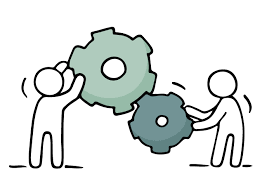Transform Your Classroom: 15 Active Listening Techniques for Enhanced Engagement
Effective communication forms the bedrock of successful education. Active listening, often underestimated, is crucial for creating dynamic classrooms where every student feels valued and heard. This guide offers practical techniques to cultivate a culture of attentive listening, maximizing both teacher-student and peer-to-peer interactions. Let's explore how to elevate your classroom communication.
Nonverbal Communication: The Foundation of Engagement
Active listening starts with nonverbal cues showing genuine interest and respect. Consistent eye contact builds trust and creates a safe environment for open communication. Reinforce this with supportive body language—nodding, smiling, leaning in—encouraging students to share freely. These subtle gestures foster a welcoming atmosphere, promoting open dialogue and active participation.
Beyond Hearing: Understanding and Responding Thoughtfully
True active listening goes beyond simply hearing; it involves processing information and responding thoughtfully. Paraphrasing and summarizing student contributions ensures accurate understanding and validates their points, making them feel heard. Employing open-ended questions stimulates deeper critical thinking, enriching discussions and transforming learning into a collaborative exploration.
Building Empathy and Inclusivity: A Safe and Supportive Learning Environment
Empathy is vital to active listening. Acknowledging and validating students' emotions creates a supportive environment where they feel safe expressing themselves without fear of judgment. This fosters open communication and builds trust, essential for positive learning. Minimizing external distractions keeps the focus on students and their contributions.
Practical Application: Implementing Active Listening Strategies in the Classroom
Active listening is a skill refined through practice. Active note-taking demonstrates engagement and provides valuable references for future discussions, reinforcing key concepts. Facilitating equitable turn-taking—using techniques like raising hands or speaking tokens—ensures all voices are heard, promoting fairness and inclusivity. Cultivating patience and avoiding interruptions allows students to fully articulate their thoughts, creating a respectful and supportive atmosphere. This encourages open communication and deeper engagement with the material.
Leveraging Technology for Enhanced Active Listening
In today's digital world, technology can significantly enhance active listening. Interactive tools like online discussion forums, polling applications, and collaborative document editing platforms offer diverse avenues for student participation. These tools amplify voices, encourage diverse perspectives, and enrich the learning experience. However, it's crucial to use technology thoughtfully, ensuring it complements, not distracts from, attentive listening.
Fostering a Culture of Mutual Respect and Understanding
A supportive classroom environment is paramount. Students must feel empowered to share ideas without fear of judgment. Teachers should explicitly encourage mutual respect and active listening among peers, fostering a collaborative learning community where everyone feels valued. Flexibility and adaptability are key; adjusting techniques to accommodate different learning styles and communication preferences ensures inclusivity. Recognizing individual learning styles—some thrive in groups, others prefer individual attention—is crucial for effective active listening.
Reflective Listening: Deepening Understanding and Validation
Reflective listening—paraphrasing, clarifying, and summarizing student contributions—ensures comprehension and validates viewpoints. This reinforces what students have said, making them feel heard and understood, addressing any misunderstandings. It strengthens the teacher-student relationship built on mutual respect and trust.
Continuous Improvement: The Ongoing Journey of Active Listening
Implementing these active listening strategies transforms the classroom into a dynamic and engaging learning space built on empathy, respect, and effective communication. Remember, active listening is a continuous process of refinement. Adapt these techniques to your teaching style and students' unique needs. The benefits—a more engaged, understanding, and successful learning environment—are immeasurable. Continuous reflection and adaptation are crucial for maximizing the impact of active listening.
Share your experiences and insights! How have you integrated active listening into your teaching? Which strategies have been most effective? Let's continue this conversation and collaboratively refine our approaches to fostering a more engaged and inclusive learning environment for all students.



No comments yet. Be the first to share your thoughts!